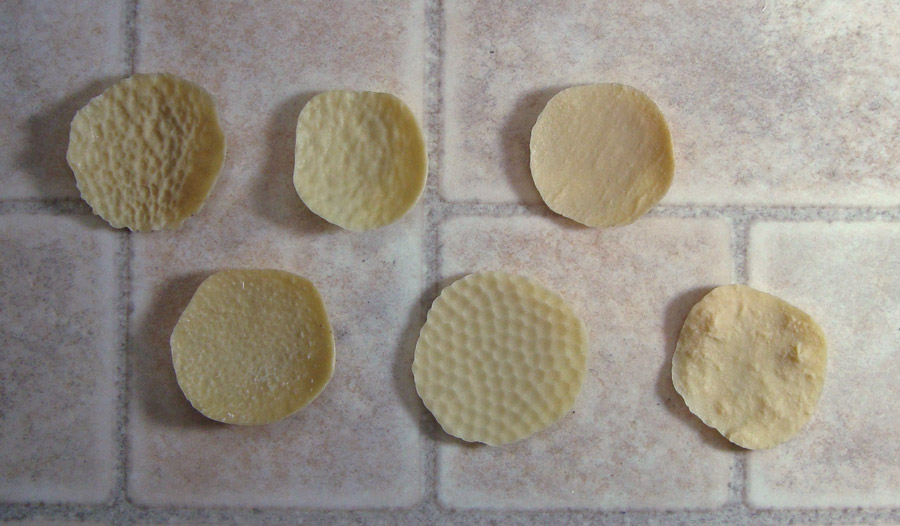Sculpting Tools

This page will go over many kinds of tools useful for sculpting soft materials like oil-based clay, polymer clay, water-based clay, epoxy putties, air-dry clays, and so on.
The first set of tools up there are called loop tools (or sometimes ribbon tools or scrapers), consisting of a metal loop attached into a base. They come in many different shapes, and you can also use pliers to reshape them to suit your own needs. (Just don't do this too many times, or they may snap!)
A good set of these tools will have very strong metal loops which you cannot bend with your fingers. In my favorite set, the five tools on the left of the photo, the metal is thicker in the middle, but tapers into a fairly thin edge. The smaller tools on the right are great for fine detail. The big loop works great for smoothing large areas of clay prior to adding fine details.
If you plan to work with oil-based clay much at all, I highly advise getting a good set of loop tools!

Here are some additional types of tools I make a lot of use of. You can buy them individually, or get many of them together in a nice set like this one!
- Clay wire - A clay wire is a piece of thin, flexible wire attached at either end to a piece of wood. When you have a block of clay, you can use this type of tool to shear off a flat chunk of it, any thickness you need. Just wrap the wire all the way around the clay block until they cross over one another, hold one of the wooden handles in each hand, and pull. They will cut cleanly through the clay. These tools work great on both water and oil-based clay.
- Sculpting knife - I am not actually sure of the proper name for these kinds of tools! I've seen them called 'cleanup tools' or 'spearhead tools'. It's one of those things I've had around forever. It's a wooden tool with a sharp diamond-shaped knife at one end and a curved, scoop-like knife at the other. They are equally good at doing fine detail work in soft clay and carving details into dry water-based clay. They can be found in many sets of tools.
- Wooden tools - Wooden tools come in many shapes and varieties, and are quite versatile! I find them most useful for the more putty-like polymer clay, though they can be used with oil-based clay as well.
- Metal scraper - Like the large loop tool above, a scraper like this is good for smoothing out the rough beginnings of an oil-based clay sculpture. Some scrapers have teeth (like a saw blade), and some have a flat edge like this.
- Rolling pin - The roller shown here is just a piece of 3/4" PVC pipe, not ideal, but it works! Clay does stick to a roller, so it's often a good idea to roughly flatten the clay by hand, then put it between two sheets of wax paper or silicone mats before using a roller on it. (I got a pair of those silicone mats and they're really handy for a lot of things!) If you need a particular thickness of clay, you can put the clay between two pieces of wood of the same height, to keep the roller from pressing the clay down any more than you need. As another alternative, silicone rolling pins are very handy to keep clay from sticking!
Additionally, there are metal tools made especially for making holes through clay. Thin holes can be made with a solid metal tool that looks like a thick needle attached into a wooden base. Wider holes are made with tools than look like thin metal pipes.

To achieve a particular look, clays can be pressed into small molds or they can be textured with stamps. Both the molds and the stamps are made from flexible materials. The texture stamps above are homemade ones (see Tutorial: Making Latex Texture Stamps) made out of natural rubber latex. Silicone rubber is probably the best choice, as almost nothing will stick to it.
If you found this helpful, consider leaving us a tip or becoming a Patron! Your generosity helps our small business thrive.
Categories: Costuming, Materials and Tools, Tutorials, Materials, and Tools
Tags: clay, epoxy, knife, knives, loop, ribbon, roller, rolling pin, scraper, sculpting, texture stamp, tools, wire, wooden tools
Live Date: 8/18/2013 |
Last Modified: 9/29/2022